Abstract
1. The secretory response to stimulation of the vagus nerves has been examined in the pig and compared with that in the dog under similar experimental conditions.
2. In the pig, stimulation of the vagus nerves caused a profuse flow of pancreatic juice with a high content of bicarbonate, in addition to a secretion of digestive enzymes; atropine suppressed the secretion of enzymes but failed to diminish the flow of bicarbonate-rich juice.
3. Intra-arterial injections of acetylcholine closely imitated the effects of stimulation of the nerves, with the difference that both the flow of juice and the secretion of enzymes were abolished together by atropine.
4. Stimulation of the nerves and injections of acetylcholine were effective after resection of the stomach and intestine: these stimuli can therefore act directly on the pancreas, independently of the release of gastro-intestinal hormones.
5. In the dog, the pancreas differed from that of the pig in that stimulation of the vagus nerves and injections of acetylcholine acted predominantly on the secretion of enzymes and caused only a sparse flow of juice. Atropine annulled all these effects together.
6. The results show that the vagus nerves can exert a much wider control of the secretion of pancreatic juice in the pig than in the dog. Possible mechanisms for this action are discussed.
Full text
PDF

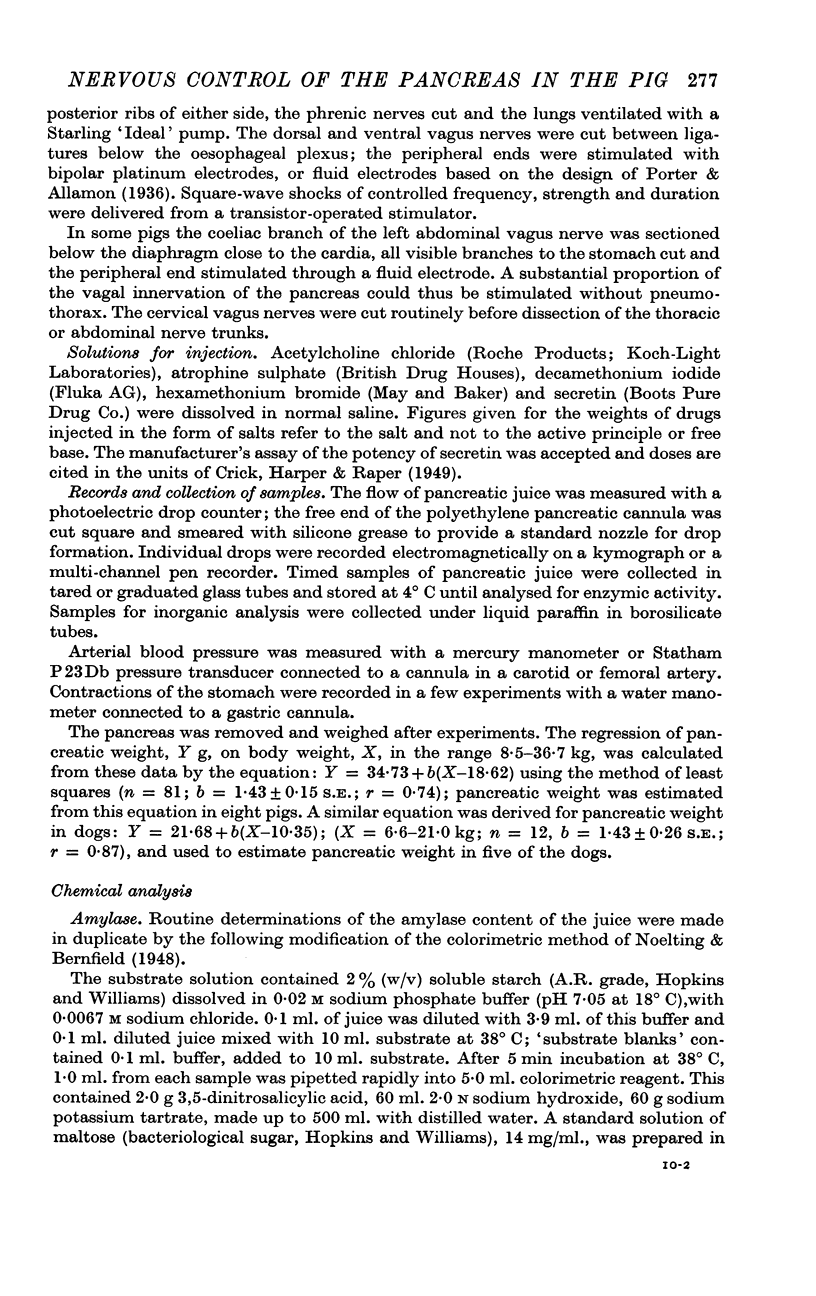
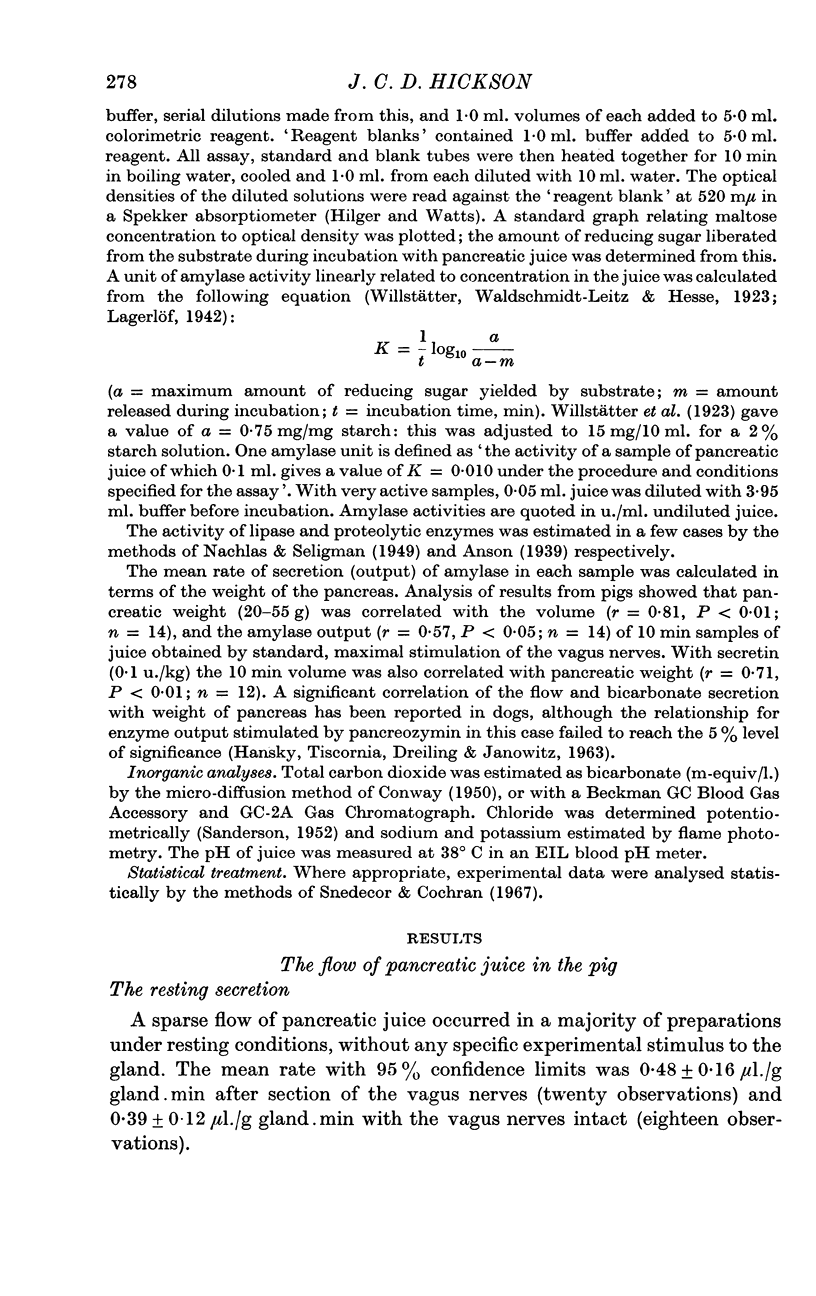

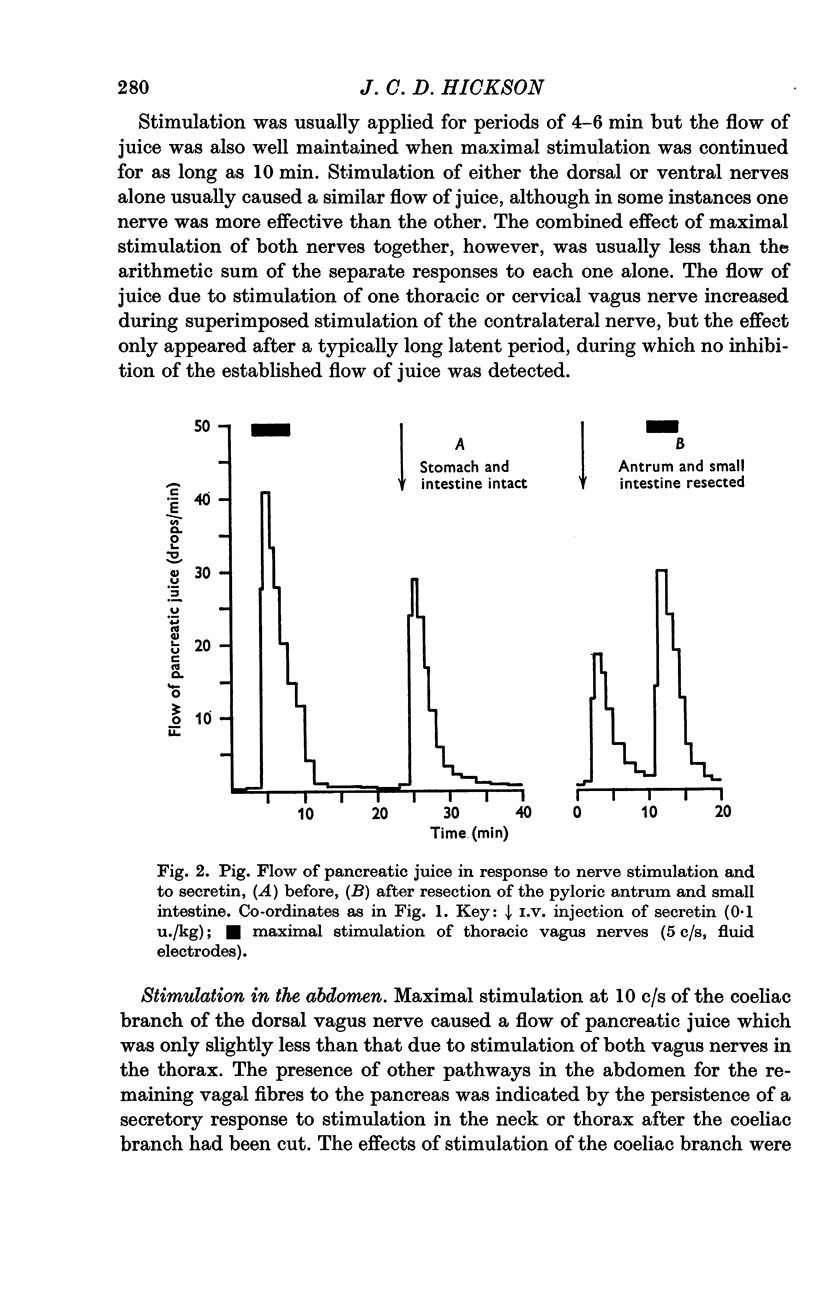


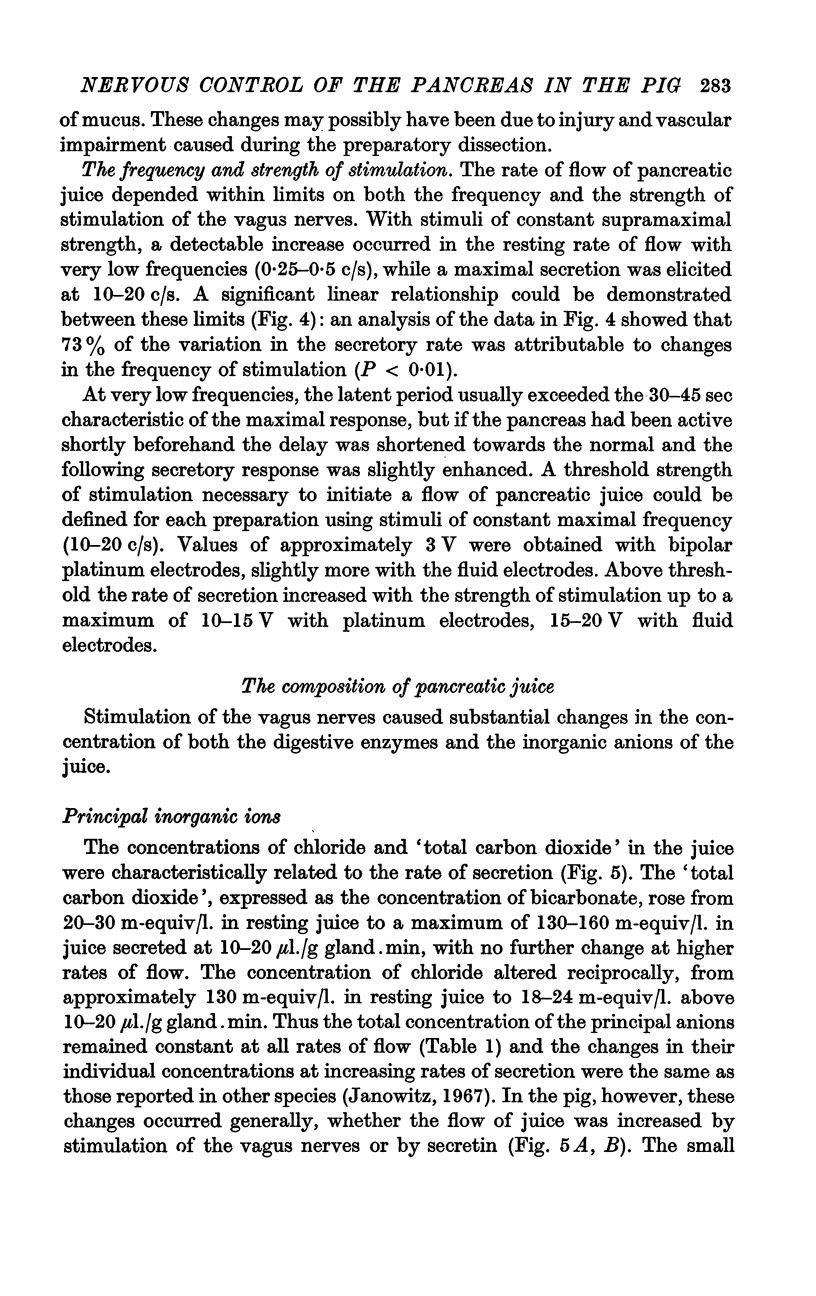
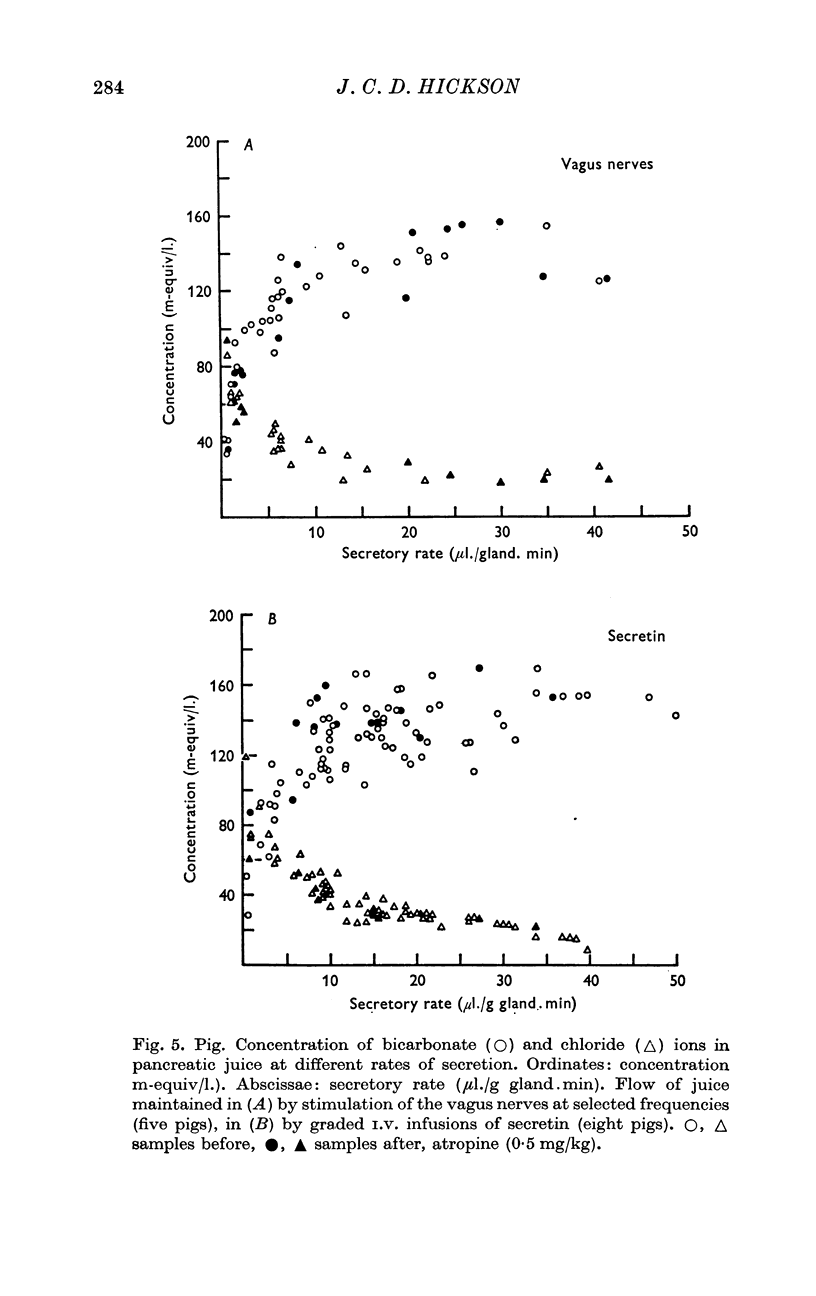


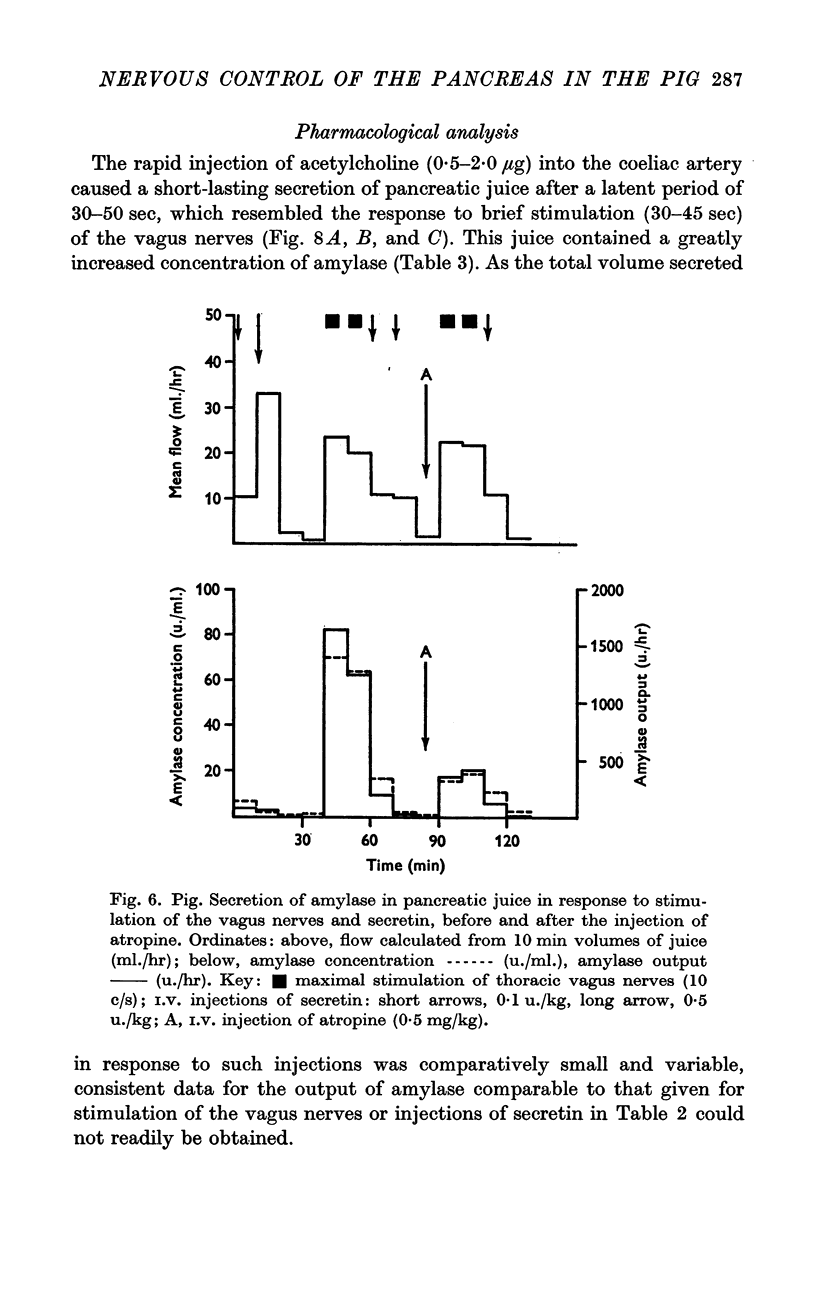


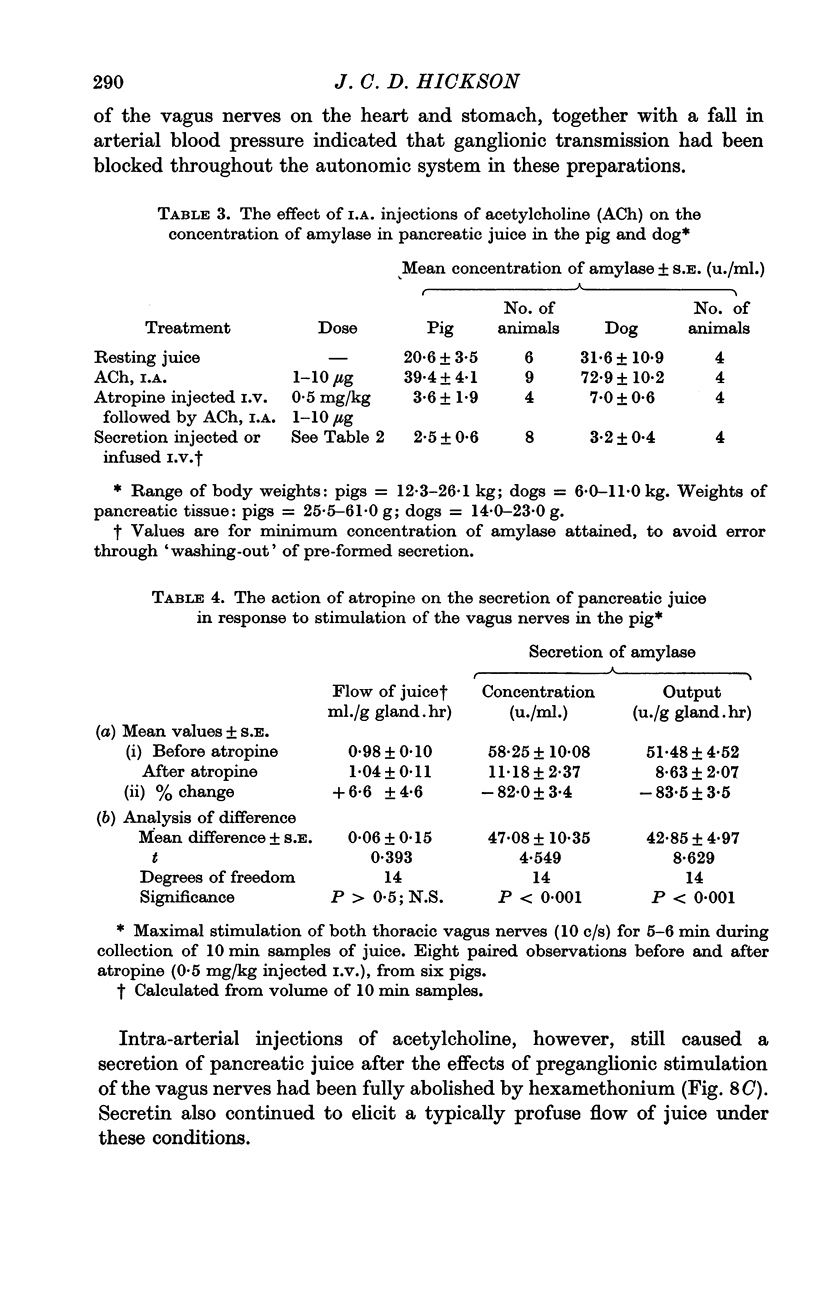

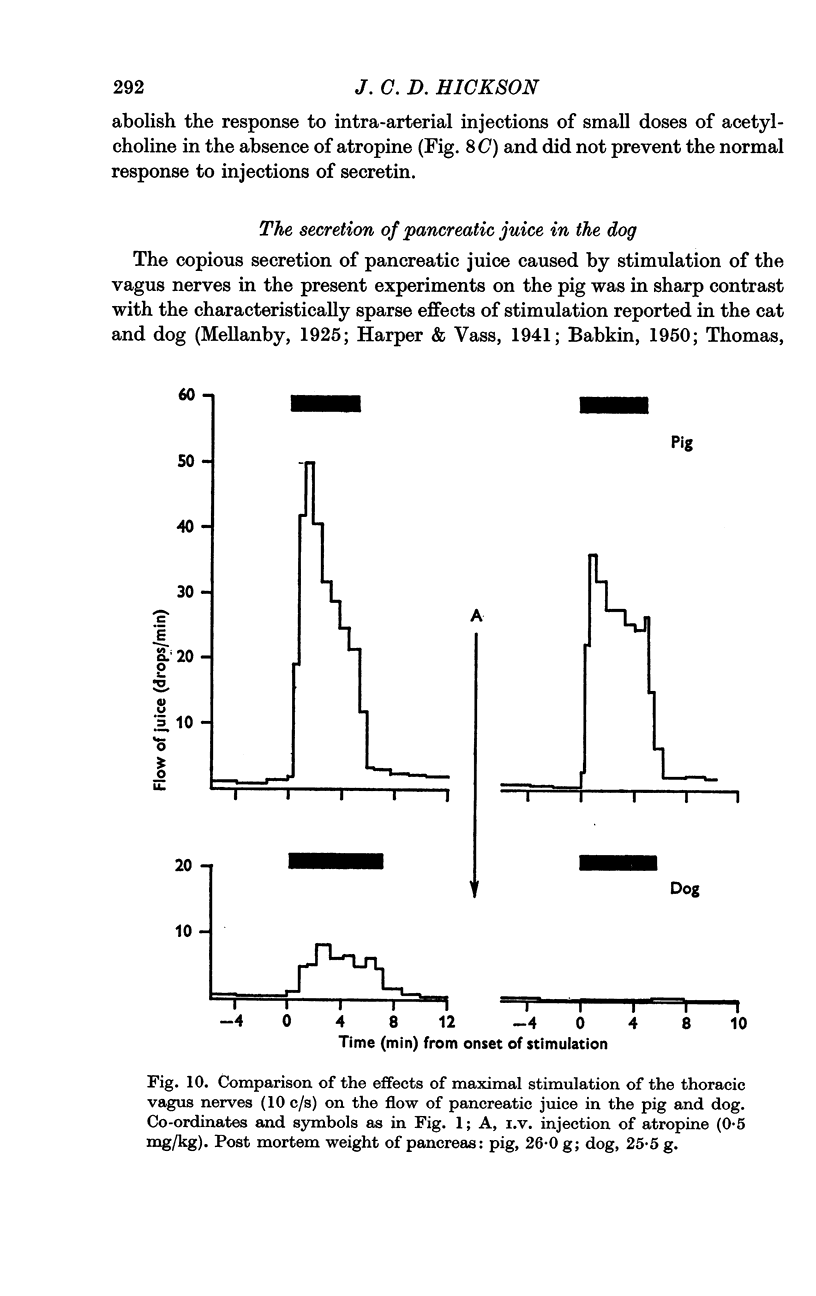


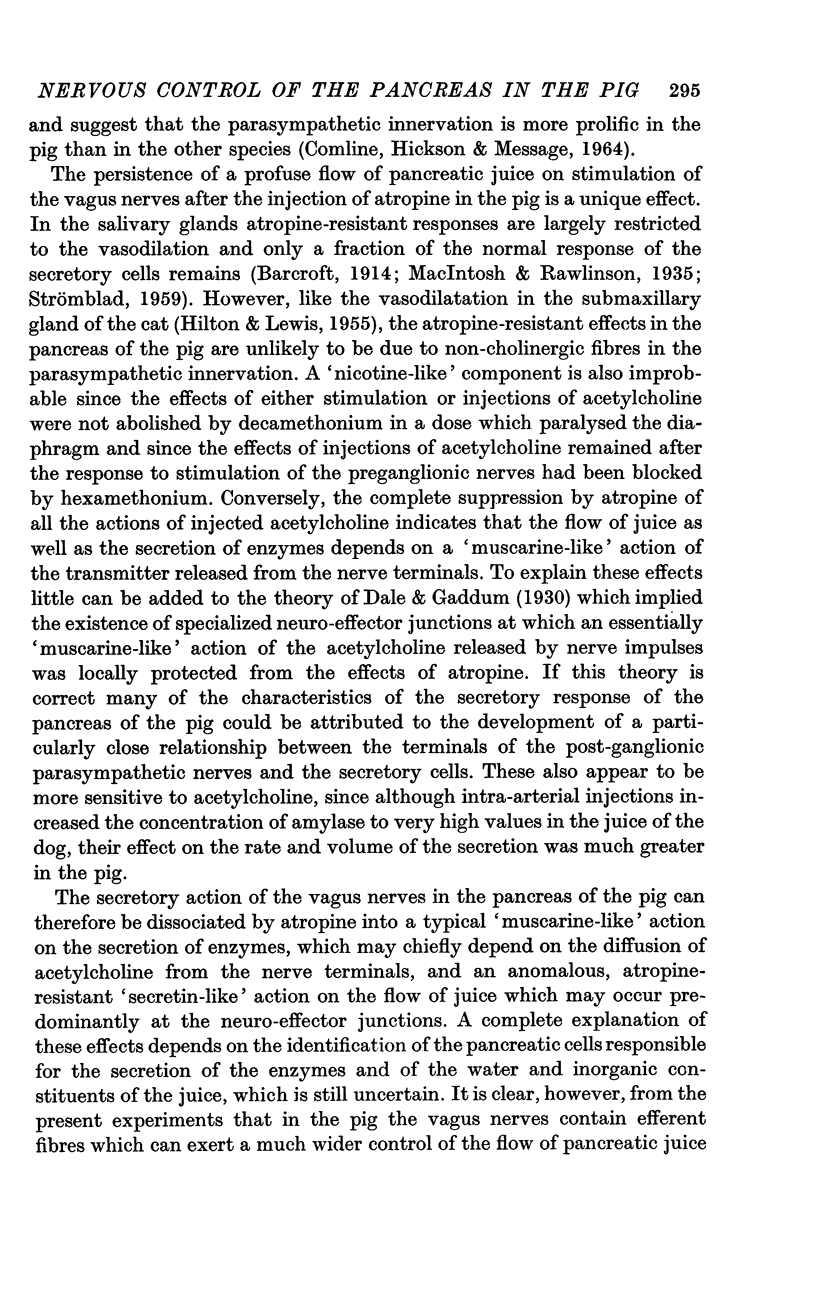
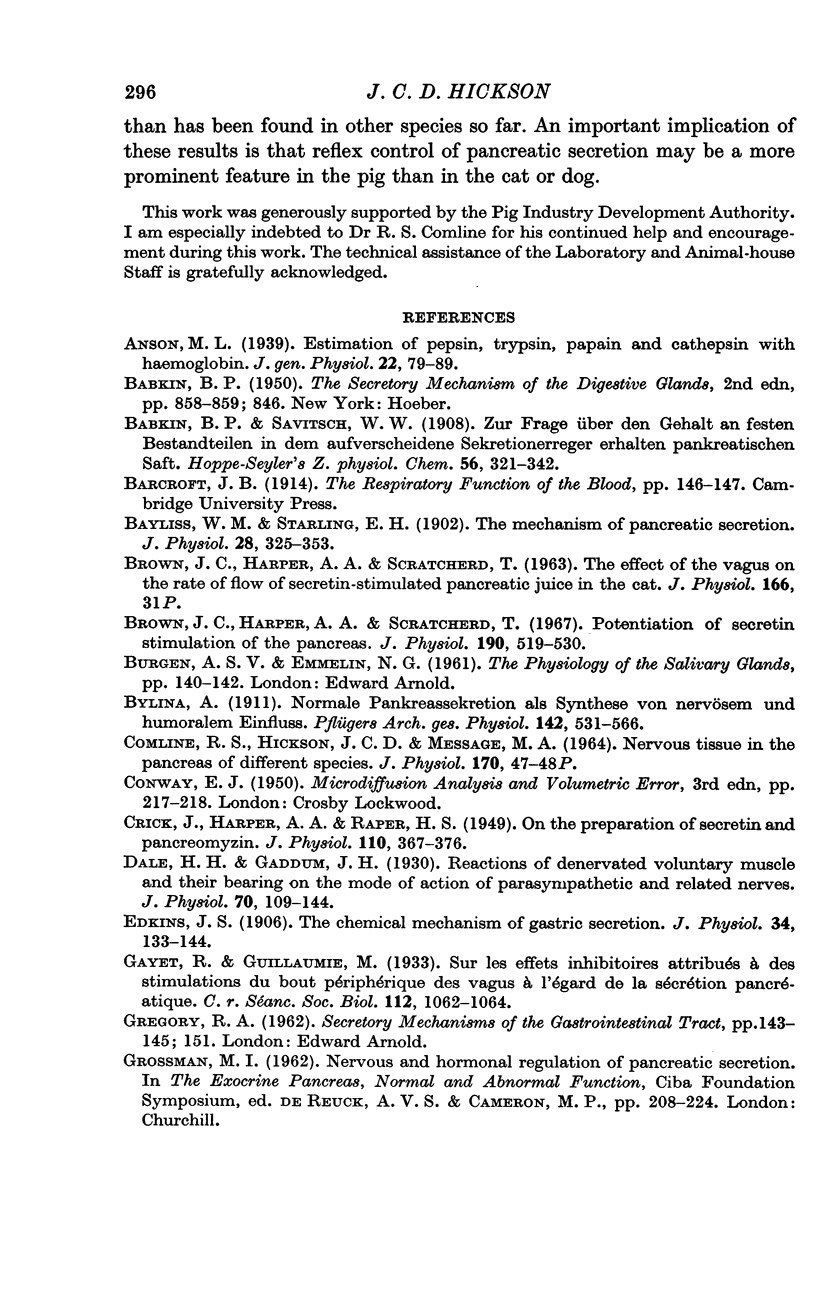
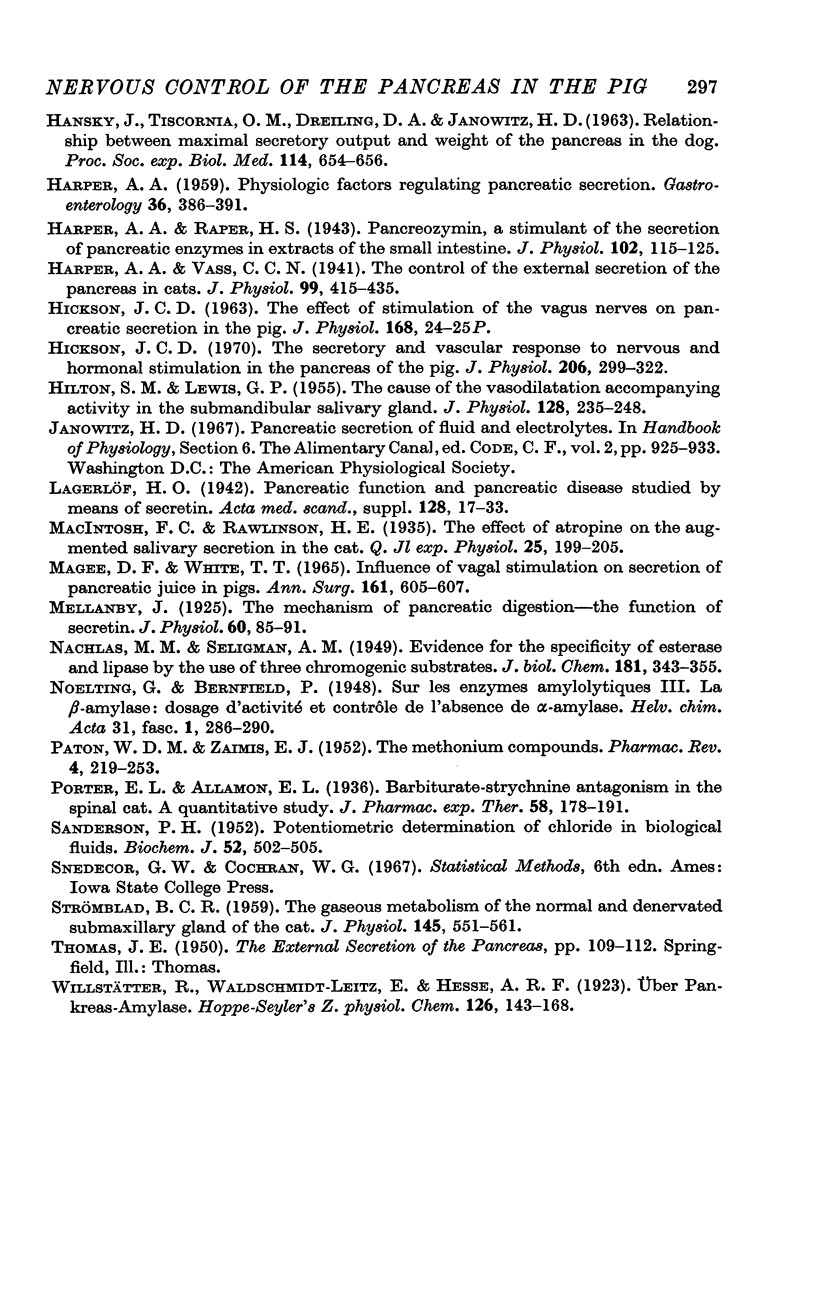
Selected References
These references are in PubMed. This may not be the complete list of references from this article.
- Bayliss W. M., Starling E. H. The mechanism of pancreatic secretion. J Physiol. 1902 Sep 12;28(5):325–353. doi: 10.1113/jphysiol.1902.sp000920. [DOI] [PMC free article] [PubMed] [Google Scholar]
- Brown J. C., Harper A. A., Scratcherd T. Potentiation of secretin stimulation of the pancreas. J Physiol. 1967 Jun;190(3):519–530. doi: 10.1113/jphysiol.1967.sp008225. [DOI] [PMC free article] [PubMed] [Google Scholar]
- CRICK J., HARPER A. A., RAPER H. S. On the preparation of secretin and pancreozymin. J Physiol. 1949 Dec;110(3-4):367–376. doi: 10.1113/jphysiol.1949.sp004445. [DOI] [PMC free article] [PubMed] [Google Scholar]
- Dale H. H., Gaddum J. H. Reactions of denervated voluntary muscle, and their bearing on the mode of action of parasympathetic and related nerves. J Physiol. 1930 Sep 18;70(2):109–144. doi: 10.1113/jphysiol.1930.sp002682. [DOI] [PMC free article] [PubMed] [Google Scholar]
- Edkins J. S. The chemical mechanism of gastric secretion. J Physiol. 1906 Mar 13;34(1-2):133–144. doi: 10.1113/jphysiol.1906.sp001146. [DOI] [PMC free article] [PubMed] [Google Scholar]
- HANSKY J., TISCORNIA O. M., DREILING D. A., JANOWITZ H. D. RELATIONSHIP BETWEEN MAXIMAL SECRETORY OUTPUT AND WEIGHT OF THE PANCREAS IN THE DOG. Proc Soc Exp Biol Med. 1963 Dec;114:654–656. doi: 10.3181/00379727-114-28760. [DOI] [PubMed] [Google Scholar]
- HARPER A. A. Physiologic factors regulating pancreatic secretion. Gastroenterology. 1959 Mar;36(3):386–391. [PubMed] [Google Scholar]
- HILTON S. M., LEWIS G. P. The cause of the vasodilatation accompanying activity in the submandibular salivary gland. J Physiol. 1955 May 27;128(2):235–248. doi: 10.1113/jphysiol.1955.sp005302. [DOI] [PMC free article] [PubMed] [Google Scholar]
- Harper A. A., Raper H. S. Pancreozymin, a stimulant of the secretion of pancreatic enzymes in extracts of the small intestine. J Physiol. 1943 Jun 30;102(1):115–125. doi: 10.1113/jphysiol.1943.sp004021. [DOI] [PMC free article] [PubMed] [Google Scholar]
- Harper A. A., Vass C. C. The control of the external secretion of the pancreas in cats. J Physiol. 1941 Jun 30;99(4):415–435. doi: 10.1113/jphysiol.1941.sp003912. [DOI] [PMC free article] [PubMed] [Google Scholar]
- Hickson J. C. The secretory and vascular response to nervous and hormonal stimulation in the pancreas of the pig. J Physiol. 1970 Feb;206(2):299–322. doi: 10.1113/jphysiol.1970.sp009014. [DOI] [PMC free article] [PubMed] [Google Scholar]
- MAGEE D. F., WHITE T. T. INFLUENCE OF VAGAL STIMULATION ON SECRETION OF PANCREATIC JUICE IN PIGS. Ann Surg. 1965 Apr;161:605–607. doi: 10.1097/00000658-196504000-00020. [DOI] [PMC free article] [PubMed] [Google Scholar]
- Mellanby J. The mechanism of pancreatic digestion-the function of secretin. J Physiol. 1925 May 21;60(1-2):85–91. doi: 10.1113/jphysiol.1925.sp002223. [DOI] [PMC free article] [PubMed] [Google Scholar]
- NACHLAS M. M., SELIGMAN A. M. Evidence for the specificity of esterase and lipase by the use of three chromogenic substrates. J Biol Chem. 1949 Nov;181(1):343–355. [PubMed] [Google Scholar]
- PATON W. D. M., ZAIMIS E. The methonium. Pharmacol Rev. 1952 Sep;4(3):219–253. [PubMed] [Google Scholar]
- SANDERSON P. H. Potentiometric determination of chloride in biological fluids. Biochem J. 1952 Nov;52(3):502–505. doi: 10.1042/bj0520502. [DOI] [PMC free article] [PubMed] [Google Scholar]


